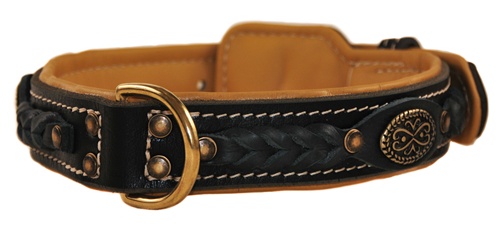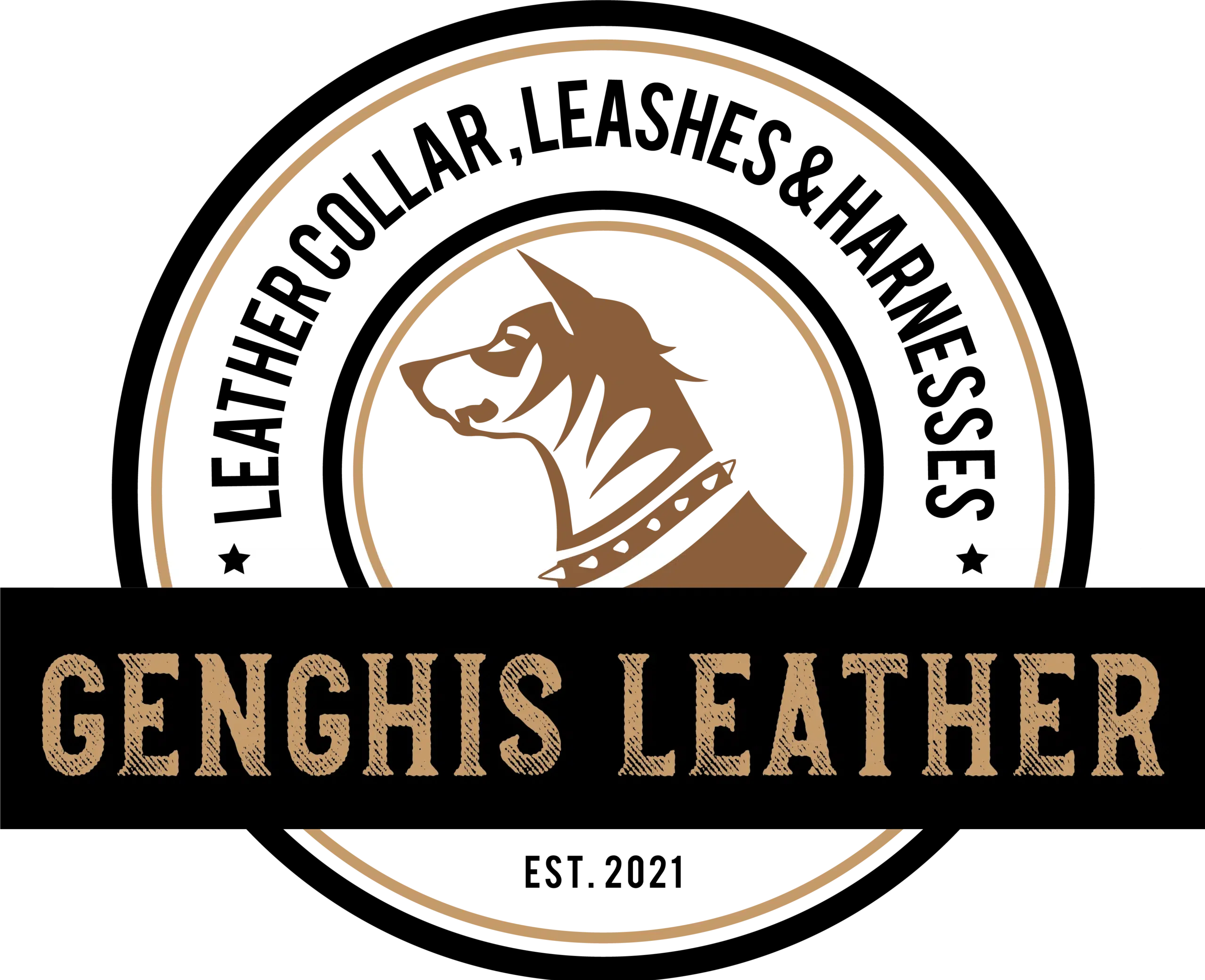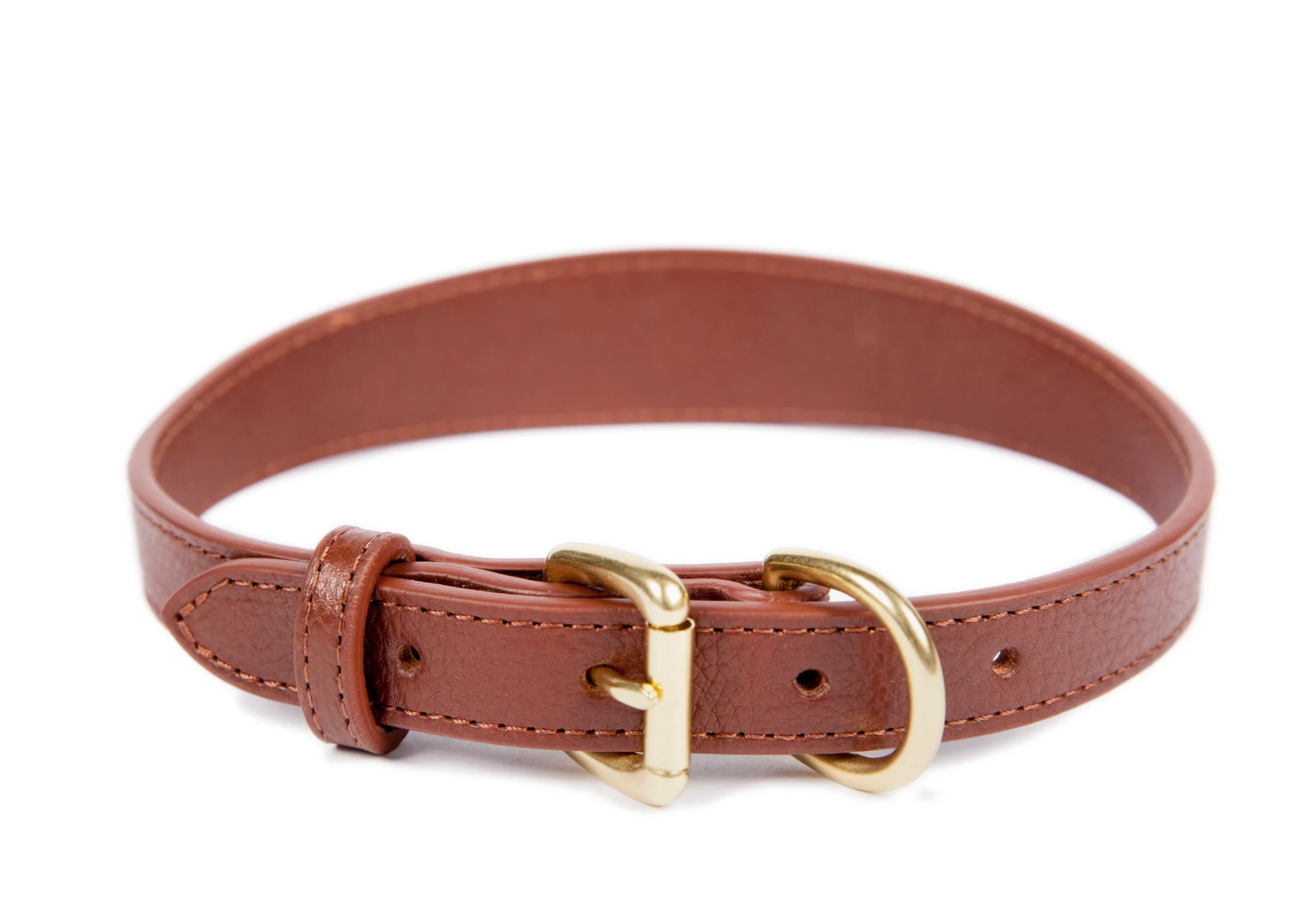DIY Lined Leather Dog Collar: 2024 Step-by-Step Guide for Pet Owners
Are you looking to add a personal touch to your furry friend’s accessories? Making a lined leather dog collar is a rewarding DIY project that’ll have your pup strutting in style. Not only is it…
Are you looking to add a personal touch to your furry friend’s accessories? Making a lined leather dog collar is a rewarding DIY project that’ll have your pup strutting in style. Not only is it a fun and creative try, but it can also save you money compared to store-bought options.
We’ll guide you through the process of crafting a high-quality, comfortable collar for your canine companion. From selecting the right materials to assembling the final product, we’ll cover every step in detail. Whether you’re a seasoned crafter or a beginner, you’ll find our instructions easy to follow. By the end of this article, you’ll have the knowledge and confidence to create a custom collar that’s both functional and fashionable for your four-legged friend.
Materials and Tools Needed
Creating a lined leather dog collar requires exact materials and tools. We’ll guide you through the essential supplies and specialized hardware needed for this project.
Essential Leather Working Supplies
To create a high-quality lined leather dog collar, you’ll need:
- Leather: Use 5-6 oz vegetable-tanned leather for the outer layer and 3-4 oz leather for the lining
- Edge dye: Water-based, matching the leather color
- Leather mallet: For shaping and flattening
- Hole punch: Circular, for creating holes for hardware
- Swivel knife: For carving decorative patterns
- Edge beveler: To smooth and round edges
- Edge slicker: For a polished finish on edges
- Leather shaver: To thin leather where needed
- Bone folder: For creasing and smoothing
- Leather scissors: For cutting leather precisely
- Ruler: For accurate measurements
- Strap cutter: If using full hide leather
- Clean rags, brushes, and sponges: For applying dye and finishes
Specialized Hardware for Dog Collars
The following hardware is crucial for a functional and durable dog collar:
- Buckle: Choose a center bar or roller buckle in brass for durability
- D-ring: Solid brass for attaching leashes securely
- Rivets or Chicago screws: To fasten hardware to the leather
- Rivet setter: For properly installing rivets
- Needlenose pliers: For manipulating small hardware pieces
- Scratch awl: To mark holes for stitching or hardware placement
- Screwdriver: For installing Chicago screws
- Optional: Decorative stamping tools for personalized designs
When selecting materials, opt for high-quality vegetable-tanned leather, such as latigo leather, known for its durability and resistance to sweat, dirt, and weather. Brass hardware is preferred for its longevity and appearance. Remember to prioritize safety when using sharp tools and always work on a stable surface.
Preparing the Leather
Preparing the leather is a crucial step in creating a lined leather dog collar. We’ll guide you through the process of selecting the right leather, cutting it to size, and adding optional decorative elements.
Cutting and Sizing
To cut and size the leather for your dog collar, start by selecting high-quality leather like full grain or latigo. These types are durable and can withstand the wear and tear of daily use. Measure your dog’s neck and add 3-10 inches for a comfortable fit and hardware placement.
Use a leather strap cutter to achieve precise cuts, typically 1 or 1.5 inches wide. If you don’t have a strap cutter, an X-Acto knife can work, but it requires more skill for accurate results. For the lining, choose materials such as pigskin or cowhide to provide stability and prevent stretching. Cut the lining slightly smaller than the outer leather to ensure a clean finish.
Remember to factor in additional length for the buckle, D-rings, and any decorative elements you plan to add. It’s always better to cut the leather slightly longer than needed, as you can trim excess later.
Optional Tooling and Decorative Techniques
Adding decorative elements to your leather dog collar can make it unique and personalized. Tooling involves creating patterns or designs on the leather surface using specialized tools. Start by dampening the leather slightly to make it more pliable.
Use a swivel knife to outline your design, then employ various stamps and mallets to add texture and depth. Popular designs include floral patterns, geometric shapes, or your dog’s name. For a simpler approach, consider using leather dyes to add color or create a two-tone effect.
Another decorative technique is edge beveling, which softens the edges of the leather for a more finished look. After beveling, you can burnish the edges with a slicker tool for a smooth, polished appearance. If you’re feeling adventurous, try braiding thin strips of leather to create an intricate border or accent piece for your collar.
Remember, while decorative techniques can enhance the collar’s appearance, always prioritize functionality and comfort for your dog.
Creating the Lining
Creating the lining for a leather dog collar is crucial for stability and durability. We’ll explore the best materials to use and how to properly cut and attach the lining to ensure a high-quality finished product.
Choosing the Right Lining Material
When selecting a lining material for your leather dog collar, durability is key. We recommend using pigskin or cowhide, as these materials are strong and resist stretching. Pigskin, in particular, offers excellent stability and is less prone to deformation over time. Cowhide provides a sturdy backing that complements the outer leather layer. For a more luxurious feel, consider using a softer leather like lambskin, but be aware that it may not offer the same level of durability as pigskin or cowhide. Avoid synthetic materials, as they don’t provide the same level of strength and may not bond well with leather adhesives.
Cutting and Attaching the Lining
To cut and attach the lining for your leather dog collar, follow these steps:
- Measure the outer leather piece and cut the lining material slightly larger, allowing for a 1/8 inch overhang on all sides.
- Apply a thin, even layer of leather adhesive to both the back of the outer leather and the lining material.
- Carefully align the lining with the outer leather, starting from one end and smoothing out any air bubbles as you go.
- Once the adhesive has set, trim the excess lining material flush with the edges of the outer leather using a sharp utility knife.
- Use a leather edge beveler to create a smooth transition between the outer leather and lining.
- Apply edge paint to seal and protect the exposed edges of both layers.
By following these steps, you’ll create a professionally lined leather dog collar that’s both durable and comfortable for your furry friend.
Dyeing and Finishing the Leather
Dyeing and finishing the leather are crucial steps in creating a professional-looking lined leather dog collar. We’ll cover the techniques for applying dye evenly and protecting the leather to ensure durability and longevity.
Applying Dye Evenly
To achieve a uniform color on your leather dog collar, select a water-based edge dye that matches your desired shade. Use an applicator or specialized dispenser to cover the exposed edges with an even coat of dye. Keep a wiping rag handy to clean up any excess or drips, as the dye stains quickly. For a thorough application, don’t forget to dye the inside of the holes you’ve punched.
Allow the dye to dry completely before buffing with a soft cloth or rabbit fur. If the dye isn’t fully dry, fibers may stick to the surface, ruining the finish. For decorative effects, consider using antique leather dyes, which accumulate in crevices to create depth and texture, especially when used with stamped designs.
Sealing and Protecting the Leather
After dyeing, it’s essential to seal and protect the leather to extend the life of your dog collar. Start by cleaning the leather with a deglazer to remove any dirt, dust, or oils accumulated during the construction process. Apply a thin layer of leather conditioner, such as mink oil or cream conditioner, working it into the leather with your hands.
For added protection, especially against water, apply a thin coat of beeswax to the leather surface. Wipe off any excess to ensure a smooth finish. Consider using a water-resistant sealer for extra durability. Products like Super Sheen or other leather finishes can provide additional protection. Apply the sealer in thin, even layers, allowing each coat to dry completely before buffing with a soft cloth.
Assembling the Collar
Assembling a lined leather dog collar requires attention to detail and precision. We’ll guide you through the process of attaching hardware and securing the lining to create a durable and comfortable collar for your furry friend.
Attaching Hardware
To attach the hardware to your leather dog collar, start by sliding the buckle into its oblong slot. Next, add a pair of D-rings followed by a single D-ring, separating each section with a Chicago screw. The double D-rings are for attaching a leash, while the single D-ring is for a dog tag. Insert the rivet nearest the buckle first, using a rivet setter to secure it in place.
Slide the D-ring back up and sandwich it between the leather layers. Once positioned correctly, insert the second rivet and set it. Trim the strap to the appropriate length, using your dog or an old collar for reference. Punch out the buckle notches, spacing them 1/2 inch apart and starting about 1-2 inches from the end of the strap.
Securing the Lining
To secure the lining of your leather dog collar, begin by aligning the lining piece with the outer leather layer. Apply a thin, even layer of leather adhesive to both surfaces, following the manufacturer’s instructions. Press the lining firmly onto the outer layer, ensuring there are no air bubbles or wrinkles. Use binder clips or clothespins to hold the layers together while the adhesive sets.
Once dry, trim any excess lining material, leaving a small margin around the edges. To create a polished look, fold the outer leather layer over the lining at the edges and secure it with small stitches or additional adhesive. This technique, known as “turning the edge,” provides a clean finish and prevents the lining from separating over time.

Adding Personal Touches
Adding personal touches to your lined leather dog collar enhances its uniqueness and reflects your pet’s personality. We’ll explore two popular methods for customization: decorative elements and practical identification.
Customizing with Studs or Embroidery
Studs offer a flashy and durable way to personalize your dog’s collar. To add studs, mark their placement on the leather using the actual decoration or a scratch awl. For easy marking, lock studs in needlenose pliers to mark both tails at once. Cut parallel holes with an X-Acto blade, push the stud through, turn the tails in with a screwdriver or pliers, and gently tap with a tack hammer. Studs are ideal for spelling out your dog’s name or creating patterns.
For a more intricate look, consider embroidery. Use leather-exact needles and thread to create designs or patterns on the collar. Pre-punch holes for easier stitching and to maintain the leather’s integrity. Embroidery allows for colorful, detailed designs but requires patience and skill.
Incorporating ID Tags
ID tags are essential for your dog’s safety and can be integrated stylishly into your custom collar. Choose a tag that complements the collar’s design and securely attach it to the D-ring. For a sleeker look, consider engraved slide-on tags that fit directly onto the collar. These tags lie flat against the leather, reducing noise and potential snagging.
When incorporating ID tags, ensure the information is clearly legible and includes your dog’s name and your contact details. For added security, consider including a microchip number if your dog has one. Balance the tag’s size with the collar width for a proportionate look that doesn’t overwhelm smaller dogs.
Caring for Your Handmade Leather Dog Collar
Regular Cleaning
We recommend cleaning your handmade leather dog collar regularly to maintain its appearance and durability. Use a soft, damp cloth to wipe away dirt and debris. For tougher stains, mix a small amount of mild soap with water and gently scrub the affected area. Avoid using harsh chemicals or excessive water, as these can damage the leather.
Conditioning the Leather
To keep the leather supple and prevent cracking, we suggest conditioning your dog collar every 3-4 months. Apply a small amount of leather conditioner using a clean cloth, working it into the leather in circular motions. Allow the conditioner to absorb for 15-20 minutes, then buff off any excess with a dry cloth.
Protecting from Moisture
While leather is naturally water-resistant, prolonged exposure to moisture can cause damage. We advise removing the collar before your dog swims or bathes. If the collar gets wet, pat it dry with a towel and let it air dry away from direct heat sources.
Storage
When not in use, store your leather dog collar in a cool, dry place away from direct sunlight. Hanging the collar or laying it flat helps maintain its shape and prevents creasing.
Hardware Maintenance
Check the collar’s hardware regularly for signs of wear or corrosion. Clean metal components with a soft cloth and apply a small amount of mineral oil to keep them functioning smoothly.
Addressing Wear and Tear
Inspect your handmade leather dog collar frequently for signs of wear, such as fraying edges or loose stitching. Address minor issues promptly to prevent further damage. For more important repairs, consult a professional leather worker.
Avoiding Harmful Substances
Keep your leather dog collar away from harsh chemicals, including pet shampoos and flea treatments. These substances can strip the leather of its natural oils and cause discoloration.
By following these care instructions, we ensure that your handmade leather dog collar remains beautiful and functional for years to come. Regular maintenance not only preserves the collar’s appearance but also extends its lifespan, providing lasting comfort and style for your furry friend.
Final Thought on Lined Leather Dog Collar
We’ve guided you through creating a unique lined leather dog collar. This DIY project offers a blend of creativity and functionality that’ll make your furry friend stand out. By following our steps you’ll create a durable personalized accessory that reflects your pet’s personality.
Remember the key aspects: quality materials proper measurements careful assembly and regular maintenance. With these in mind your handmade collar will provide comfort and style for years to come. We hope this guide inspires you to explore more leatherworking projects and enjoy the satisfaction of creating something special for your beloved pet.

